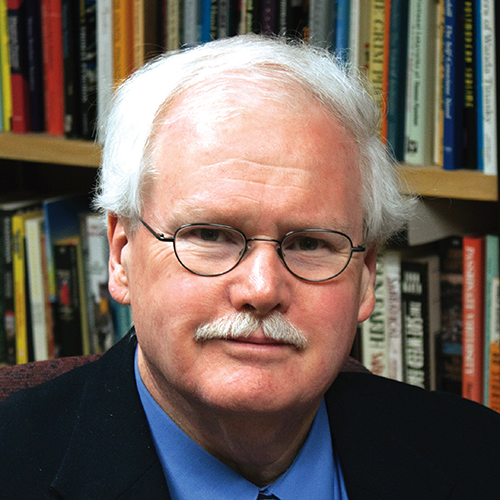2013 Outstanding University Teacher Award Winner Category I
Robert L. McLaughlin, Ph.D.
- Ph.D. in English from Fordham University (1987)
- Professor of English, Department of English
Teaching philosophy
Learning comes through dialogue: dialogue among teachers and students, dialogue among students, dialogue among students and the books and articles they read.
Three most valuable approaches that I bring to my teaching practice
Enthusiasm—if we as teachers aren’t enthusiastic about what we’re studying, the students won’t be.
Humor—students appreciate a chance to laugh, and a break from whatever we’re studying helps them maintain their concentration.
Respect—it’s important to respect the students (even the problem ones) so that they will respect me and also respect the work we’re trying to do together.
On student feedback
I once had a student tell me that she’d overheard two other students talking about me. One said, “I think he’s friendly in class, but he intimidates me in person.” The other said, “That’s funny. I feel just the opposite.” This surprised me because I’d never thought of myself as intimidating in any circumstances. I resolved to redouble my efforts at making students comfortable.
Most important teaching influences
I have been influenced by many great teachers. Charles Turk turned me on to literature. Andrew Myers and James Earl taught me how to be a professional scholar. But the greatest continuing influence has been my colleague and wife, Sally Parry. We’ve spent 25 years trading teaching strategies, talking out problems, and generally giving each other good advice. She keeps teaching fun.
Most rewarding aspect of teaching
When alums say how much my courses have meant to them. It reconfirms for me that all the work and occasional frustrations are worthwhile.
